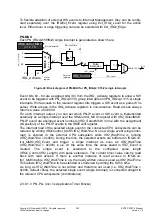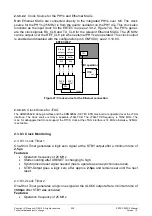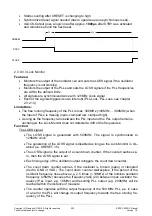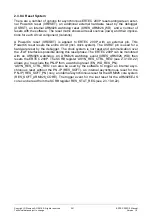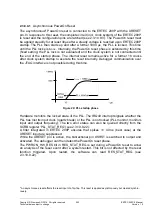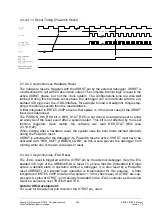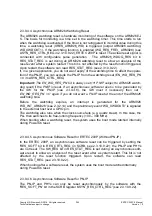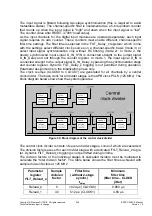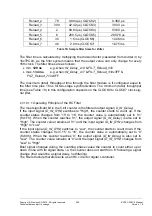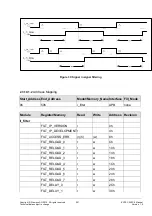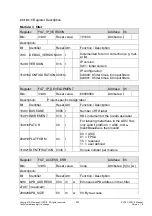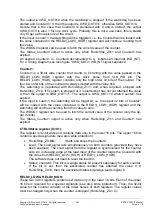
Copyright © Siemens AG 2016. All rights reserved
246
ERTEC 200P-2 Manual
Technical data subject to change
Version 1.0
The HW reset for the integrated PHYs is triggered by the 'phy_reset_o' output of the PN-
IP. Whenever the SMI module in the PN-IP is not activated (configuration mode),
'phy_reset_o – output' is active and keeps the PHYs in the reset state. A simultaneous
asynchronous SW reset for the ERTEC 200P and the PN-IP resets the complete ERTEC
200P.
2.3.9.4.7
Asynchronous Software Reset for the ARM926EJ-S Core
The ARM926EJ-S core (without TCM926) has its own reset, which can be executed
asynchronously by the software with the 'RES_SOFT_ARM926_CORE' bit in the SCRB
register 'ASYN_RES_ CTRL_REG' (see 2.3.10.9.22). 'RES_SOFT_ARM926_ CORE'
only affects the ARM926EJ-S core system and not TCM_Block_926 (see Figure 12).
TCM_Block_926 is reset with XRESET, XSRST, XRES_ARM926_WD or RES_SOFT.
The SW_RES_ARM926 bit in RES_STAT_REG is set during an asynchronous software
reset for the ARM926EJ-S core system to allow an analysis of the reset event after a
system restart. This bit is not affected by the reset function triggered. Upon restart, the
software can read RES_STAT_REG (see 2.3.10.9.22).
The asynchronous software reset for the ARM926EJ-S core system is needed once the
boot loader has set the final TCM926 configuration. The TCM926 configuration (DRSIZE
for D-TCM and IRSIZE for I-TCM
from TCM926_MAP register, see 2.3.10.9.22) is only
applied to the ARM926EJ-S after a reset.
2.3.9.4.8 Synchronous Software Reset (PN-IP, PER-IF, Host Interface)
The PN-IP, peripheral interface and host interface can be reset synchronously by the
software in the SCRB register 'SYN_RES_CTRL_REG' (see 2.3.10.9.22). These syn-
chronous resets affect the SYN reset inputs of the corresponding IPs and reset only the
state machines and the local registers and not the parameter registers or the AHB inter-
face. The synchronous reset does not affect the reset input of a flip-flop. The SW must
set and then reset the relevant bits in 'SYN_RES_CTRL_REG'. This allows the SW to set
the reset state itself (
short pulse: dyn. reset, continuously '1': disable state).

